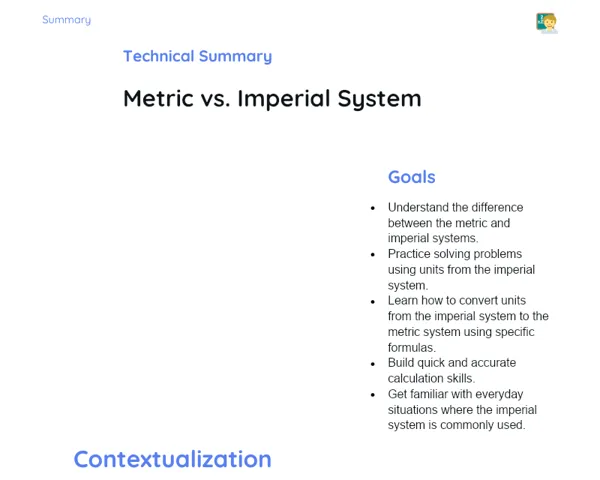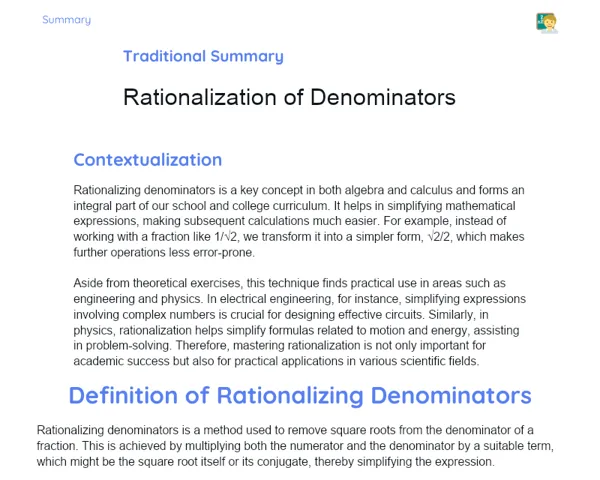Goals
1. Identify the primary trigonometric ratios: sine, cosine, and tangent of an angle in a right triangle.
2. Apply the trigonometric ratios of 30º, 45º, and 60º to find the lengths of sides of a right triangle.
Contextualization
Trigonometric ratios like sine, cosine, and tangent play a significant role in understanding and solving problems related to right triangles. These ratios find applications across various sectors such as engineering, architecture, and technology. For example, a civil engineer might use trigonometry to figure out the angle of a ramp or the height of a skyscraper, while a software developer could include it in creating 3D models for video games. Grasping these concepts is crucial to ensure accuracy and efficiency in technical and scientific projects.
Subject Relevance
To Remember!
Sine
In a right triangle, the sine of an angle is the ratio of the length of the opposite side to the hypotenuse. It is one of the fundamental trigonometric ratios and is key to solving various problems involving right triangles.
-
Sine is denoted by 'sin'.
-
Calculated using the formula: sin(θ) = opposite side / hypotenuse.
-
The sine of 30º is 1/2, for 45º it is √2/2, and for 60º it is √3/2.
Cosine
The cosine of an angle in a right triangle is the ratio of the length of the adjacent side to the hypotenuse. It is a critical trigonometric ratio used in solving various geometric challenges.
-
Cosine is represented by 'cos'.
-
It is calculated using the formula: cos(θ) = adjacent side / hypotenuse.
-
The cosine of 30º is √3/2, for 45º it is √2/2, and for 60º it is 1/2.
Tangent
In a right triangle, the tangent of an angle is the ratio of the length of the opposite side to that of the adjacent side. Tangent is often used for slope and gradient computations.
-
Tangent is denoted by 'tan'.
-
Calculated using the formula: tan(θ) = opposite side / adjacent side.
-
The tangent of 30º is √3/3, for 45º it is 1, and for 60º it is √3.
Practical Applications
-
Civil Engineering: Use trigonometric ratios to calculate the slope of ramps and the height of buildings.
-
Architecture: Determine angles and lengths in designs to ensure both stability and aesthetics in constructions.
-
Information Technology: Create 3D graphics for games and animations, applying trigonometry to compute angles and distances.
Key Terms
-
Sine: Ratio of the opposite side to the hypotenuse.
-
Cosine: Ratio of the adjacent side to the hypotenuse.
-
Tangent: Ratio of the opposite side to the adjacent side.
Questions for Reflections
-
How can you apply your knowledge of trigonometric ratios in your future profession?
-
What are some common challenges faced when working with trigonometry and how can they be tackled?
-
How can trigonometry assist in everyday tasks beyond professional settings?
Finding the Height of a Building with Trigonometry
Utilize the principles of sine, cosine, and tangent to calculate the height of a building based on its shadow and the sun's angle of elevation.
Instructions
-
Find a spot where you can see the shadow of a building.
-
Use a protractor to measure the angle of elevation of the sun.
-
Measure the length of the building's shadow using a ruler or measuring tape.
-
Apply the trigonometric ratios to calculate the building's height.
-
Check your calculations by using different angles and shadow lengths to ensure accuracy.



